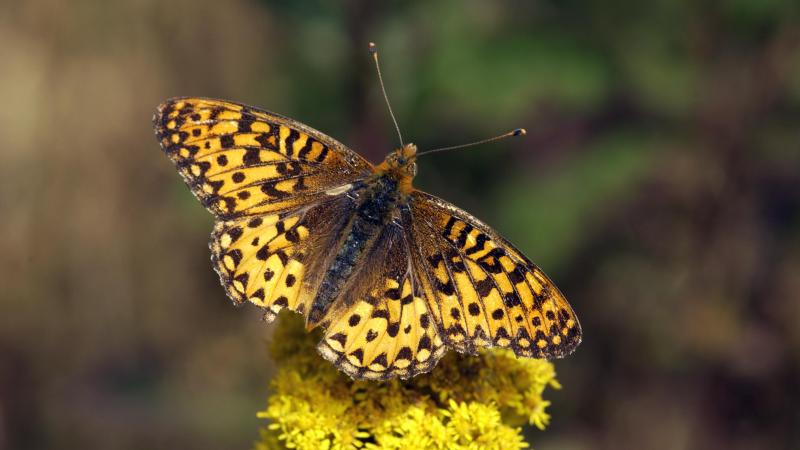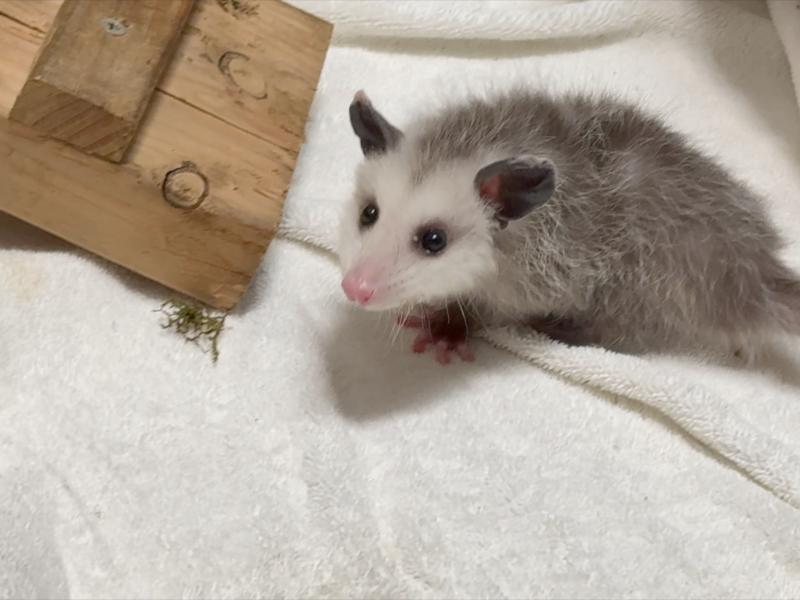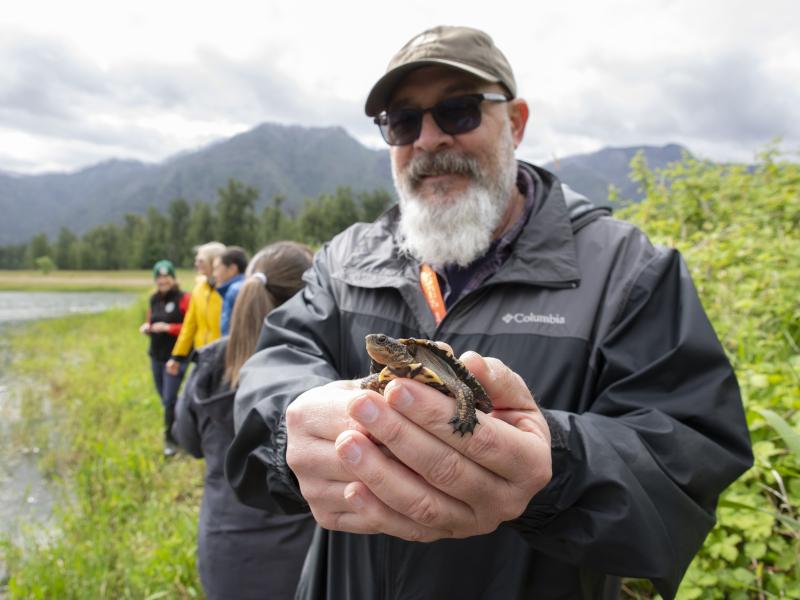Zoo, partners send 1,600 endangered butterflies into wild

Conservationists transport Oregon silverspot caterpillars to slopes of the coast range
Summer is in full swing, and some of the Oregon Zoo's tiniest residents are headed for the mountains of Oregon's coastal range.
Throughout the month of July, zoo butterfly conservationists and colleagues from the Oregon Parks and Recreation Department, the U.S. Fish and Wildlife Service, and Seattle's Woodland Park Zoo will release more than 1,600 Oregon silverspot caterpillars at five sites throughout the temperate coastal mountains in an effort to stabilize declining populations of this threatened species.
The caterpillars began their journey as part of the zoo's imperiled butterfly recovery program. Each summer, a small number of female silverspots are collected by field biologists and brought to the zoo lay eggs. The eggs hatch into tiny larvae (caterpillars), which are kept safe during their winter dormancy.
In the spring, they wake up to a leafy meal and grow quickly. When the weather grows warmer, the zoo and its conservation partners transport the caterpillars to field sites to bolster the remaining populations.
The release sites are chosen carefully based on the presence of a rare flower — the early blue violet. Early blue violets are the main food source for the silverspot caterpillars as they mature into adult butterflies, and the Oregon coastal range is one of the few remaining areas where early blue violets grow in large enough quantities to sustain a butterfly population.
Listed as threatened under the federal Endangered Species Act, the Oregon silverspot was once common in coastal grasslands from Northern California up into British Columbia. Today, due to habitat loss and the disappearance of its host plant, just four isolated populations remain: three in Oregon and one in California.
"If it weren't for this recovery effort, it's likely that three of the remaining silverspot populations would now be extinct," said Travis Koons, who oversees the Oregon Zoo's butterfly conservation lab.
Funding for the Saddle Mountain reintroduction project was provided by the USFWS Cooperative Endangered Species Conservation Fund. Additional support is provided by Coffee Creek Correctional Facility, the National Park Service, the North Coast Land Conservancy Trust, Oregon Parks and Recreation, Washington State University, Oregon DOT, Pacific University, The Nature Conservancy, Center for Natural Lands Management and Pelican Brewery.
The Oregon Zoo is a charter member of the Association of Zoos and Aquariums' Butterfly Conservation Initiative, a collaborative effort among nearly 50 zoos and aquariums. To learn more about the Oregon Zoo's effort to save Oregon silverspots and other imperiled Northwest species, visit oregonzoo.org/recovery.
More News

Awesome opossum! Orphaned baby finds new home at zoo
A tiny opossum found wandering earlier this month has made his way to a new home at the Oregon Zoo.May 28, 2025

Zoo, partners return 19 endangered turtles to wild
Zoo-reared northwestern pond turtles are released in the Columbia River Gorge It was a shell-ebration last week for 19 northwestern pond turtles reared at the Oregon Zoo. In addition to partners from the Washington Department of Fish & Wildlife and U
May 19, 2025

Sad goodbye to "Sir Snacks-a-lot," beloved red panda Moshu
The Oregon Zoo is mourning the loss of beloved red panda Moshu, who passed away peacefully this morning, more than a year after being diagnosed with severe heart disease.May 14, 2025

